October high
Frontenac State Park Association newsletter
October 2024 (Vol. 2, No. 10)
Questions, comments, compliments, complaints, contributions? Newsletter editor Pamela Miller is at pamelamarianmiller@gmail.com.
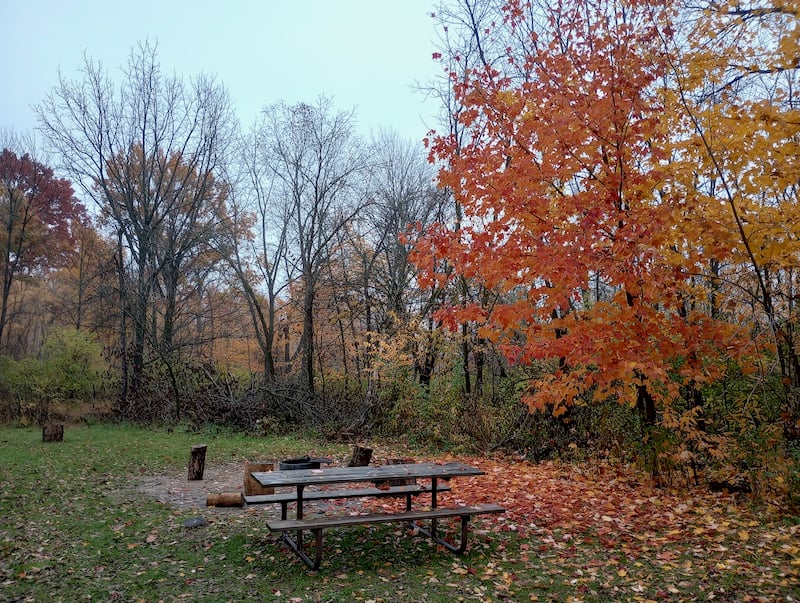
October high: Our most popular month
Traditionally, October is the month of highest visitorship in Frontenac State Park. It’s not hard to understand why. Fall colors are peaking (the sumac alone! You’ll need your sunglasses to withstand its scarlet glow), and the air is cool and comfortable – those prairie trails you understandably avoided on steamy summer days now call out to you.
And, oh, my, your, our, goodness, we all need a quiet walk in the autumn woods or wind-tousled prairie to calm us as chilly November, bringing with it that stressful little election business that you may have heard about, approaches. Breathe deep the buoying fall air, friends! No matter what, it is there for us.

Your FSPA’s October events
Join us for these October events at Frontenac State Park:
Saturday, Oct. 5, 10-11 a.m.: Nature walk with interpretive naturalist Bruce Ause, leaving from campground kiosk.
Tuesday, Oct. 8, 10-11 a.m.: Nature Explorers for preschoolers: This month’s topic is Trees! With interpretive naturalist Sara Holger and FSPA volunteers, main picnic shelter.
Saturday, Oct. 12, 9 a.m.-noon: Help us hand-collect native grass and wildflower seeds from a section of restored prairie in Frontenac State Park! The seeds you collect will later be planted in other areas of the prairie to restore the habitat and enhance biodiversity. No previous knowledge or experience is necessary; we will provide the tools and training. More information can be found here.
Saturday, Oct. 12, 10-11 a.m.: Nature walk with interpretive naturalist Bruce Ause, leaving from campground kiosk. (Bruce’s last walk of 2024. Thank you, Bruce, for these wonderful, thoughtful walks!)
Saturday, Oct. 12, noon-1 p.m.: Fungi walk with Minnesota Master Naturalist volunteer Pamela Miller, leaving from campground kiosk. We’ll hope to see a few beautiful maitake (hen of the woods) and other late risers. But it all depends on rain, which has been scarce lately. Check the Frontenac State Park Association Facebook page the day before to see if this walk is still on.
Saturday, Oct. 19, 9 a.m.-noon: Guided bird walk with Minnesota Master Naturalist volunteers Janet Malotky and Steve Dietz, leaving from campground kiosk.
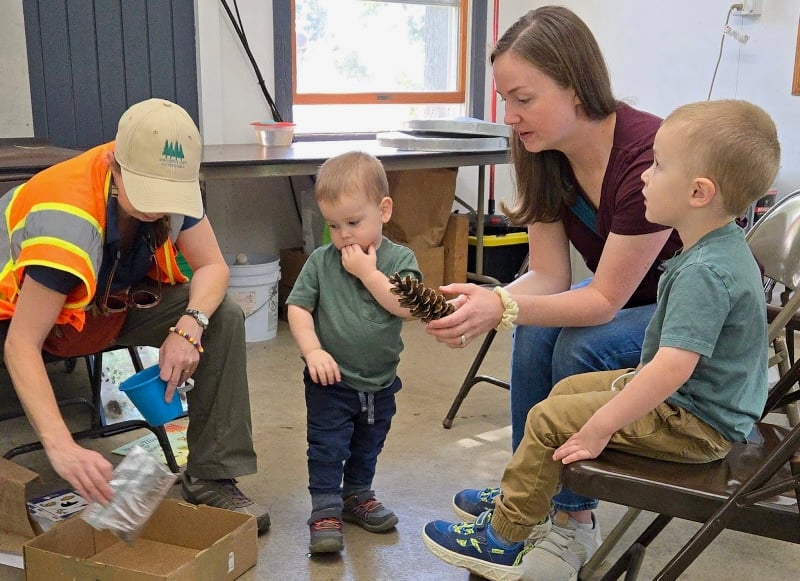
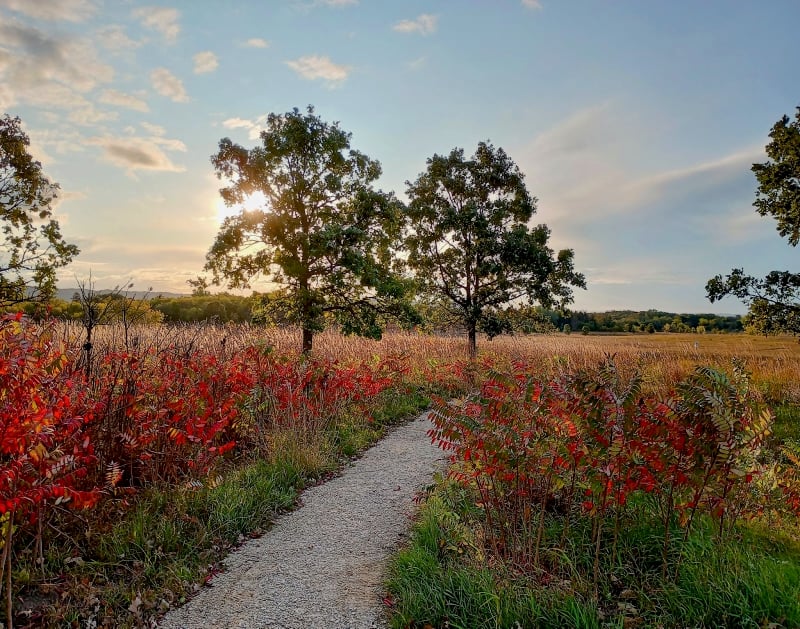
Flood … what flood?
The past few weeks have been unusually dry, which makes it easy to forget how, early this summer, rain pounded us like we’d done something wrong and the big river slid up higher than we enjoy. That early-summer deluge did a number on Frontenac State Park’s popular Sand Point Trail. Its boardwalk and bridge were washed out, and flood debris, especially plastic and Styrofoam (colorful curses on that nasty stuff!), filled and fouled our pretty path and its environs.
But presto, change-oh! The boardwalk and bridge have been rebuilt by the park’s awesome maintenance crew, and although your Frontenac State Park Association pals haven’t as of yet been able to do their official cleanup of the flooded area (on the day we were scheduled to do so, it rained dogs + cats), good souls hiking in the area have helped haul out some of the flood-strewn debris in bags provided by the park along the trail. We so appreciate this, fellow Sand Point Trail lovers! See you on the trail as fall deepens.
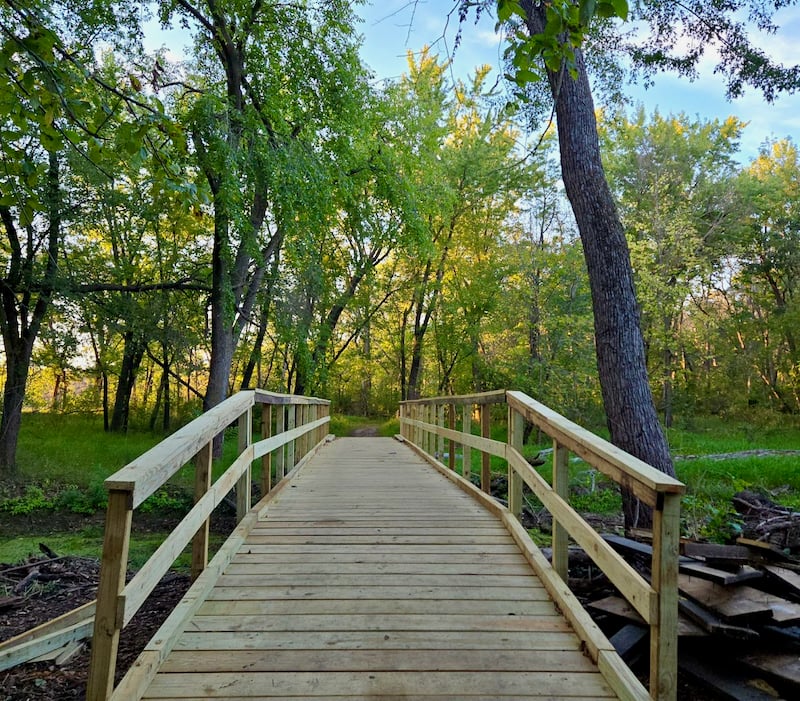
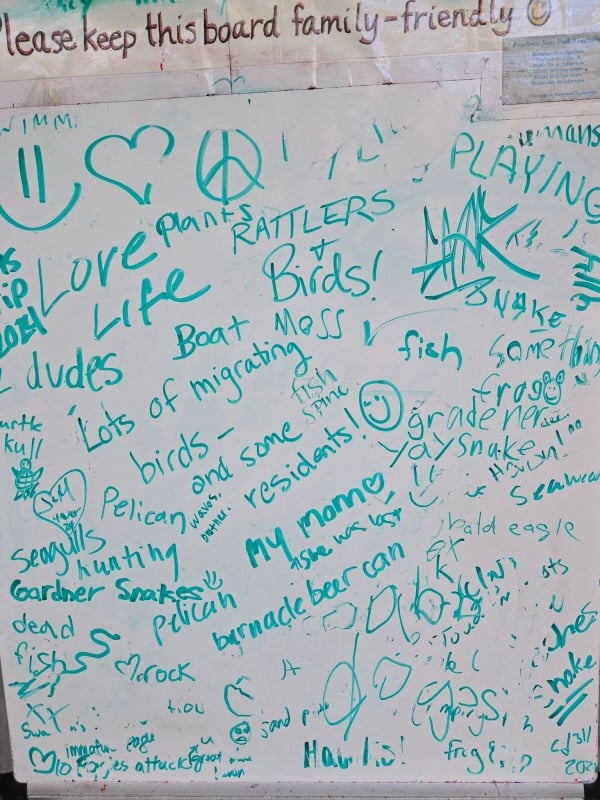
Updates from park manager Jake Gaster

Attendance update: Summer has been busy, the busiest on record outside of COVID years. While day use has been up, camping has been down, the lowest other than when our campground was closed mid-weeks for construction of our new shower building. But the drop in numbers isn’t particularly surprising given summer weather alternating between rain and high humidity.
Facilities update: Everything is now functioning in the campground shower building, except the solar water heater, which is too expensive to fix and will thus be removed at some point. Our picnic shelter bathroom is also having recurring issues because it was plumbed incorrectly; help is on the way. And we’ve got the bridge and boardwalk down at Sand Point repaired and redecked after summer flooding trashed it.
Interpretive update: We’ve had some great programs this summer! We’ve had 1,350 visitors participate in our programs and have been able to put on a wide array of programs, thanks to staff and volunteers, including dark sky viewings, mussel programs, bird hikes, a live falcon event and Archery in the Parks.
Resource update: The beavers are back at work in the Frontenac Pond! They have rebuilt their dam at the outlet, which blew out early in the summer, so water levels have gone up a foot or more in the past few weeks.
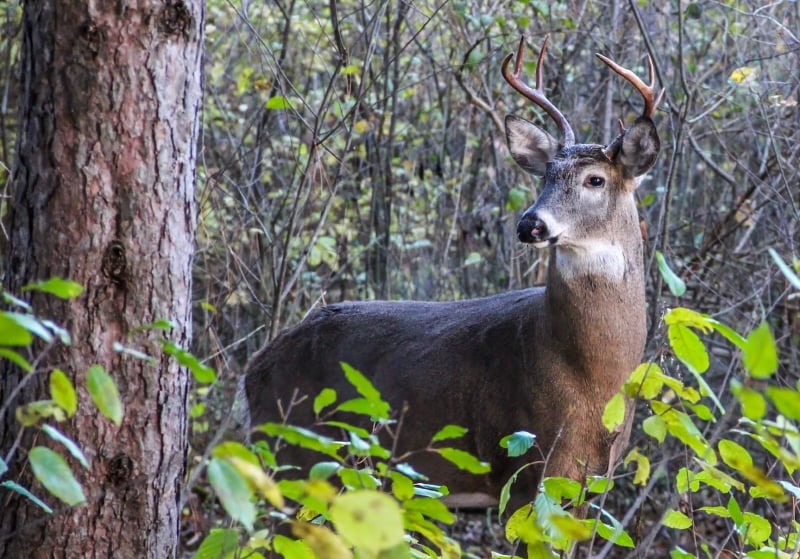
For white-tailed bucks, these are the glory days
It’s been a while since we wrote about the animal we see almost daily in the park, and which we sometimes take for granted – the white-tailed deer. About one million of them live in Minnesota (and we know, we KNOW, thousands have invaded your garden when they’re not out darting in front of your car).
We’ve written about the white-tailed deer’s gestation, birth and early lives, adding cute fawn pictures to charm you into forgetting about that little business with those night-visiting deer and every single one of your hostas and vegetable and fruit tree blossoms (yeah, sorry, man).
This time of year brings the other end of the life cycle for many deer – in particular, bucks.
Minnesota’s deer-hunting culture remains strong – a good thing, since it keeps deer herd numbers to a manageable level so starvation and disease don’t call the shots.
But now, just a few weeks before the November deer-hunting season begins, fascinating and sometimes seemingly whacko things are happening to the bucks we’ve watched grow from fawns to yearlings to heavy-headed goofballs whose days, in many cases, are numbered. What’s going on with them?
According to the Minnesota Department of Natural Resources, by late October, bucks are in the rut and notably aggressive, sparring with other bucks, hapless trees, and whatever else gets in the way of their testosterone-addled vision (that could be you, Mabel – don’t be sidling up to handsome, staggering bucks this time of year with your fancy little cell phone camera).
Love-hungry bucks scrape the ground with their front hooves and mark it with their aromatic urine; wallow in mud or dust to share their (surely very attractive to someone, something, somewhere, not you or me, Mabel) scent, and compulsively rub their antlers on tree trunks to build up their neck muscles, stake their territory and announce their breeding availability to does. They drool and curl their upper lips when near a doe in estrus.
Meanwhile, also this time of year, you’ll see large groups of deer move into farm fields and roadside meadows and farm fields, almost fearless in their incessant grazing, as they fatten up for the coming winter. But bucks aren’t usually with them. In late October and November, bucks travel solo and in broader ranges, and eat and sleep less. They have one job, well, maybe many jobs that are part of that one job, if you know what we mean, and we think you do, and they’re hopelessly devoted to it.
Glory days! Enjoy, staggering bucks, because November is coming.
And it’ll soon be time for you, non-addled human hikers, to don your bright orange wear. Here’s information about this fall’s deer-hunting seasons.
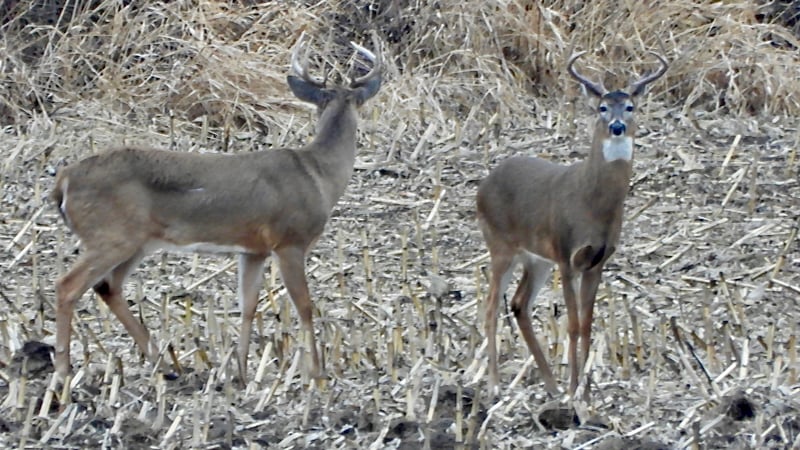
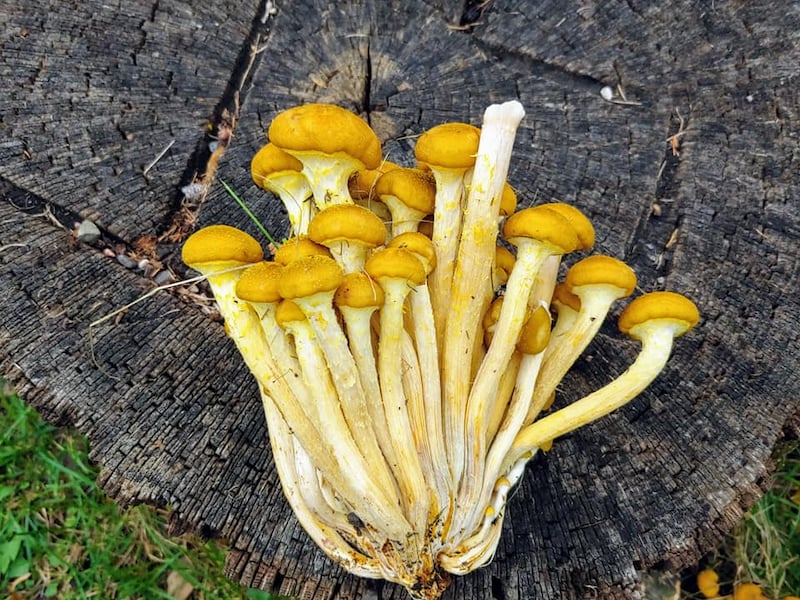
Mushroom of the month: Honey fungi
Honey mushrooms (several species within the Armillaria genus), along with several other fall mushrooms like hen of the woods (maitake), thrived this year – that is, until the sudden recent drought. Gilled, golden-capped honeys grow in clusters on stumps or fallen trees, near the base of living trees, and sometimes solitary on the ground.
Use caution if you’re picking them to eat. Brown/tan/golden mushrooms abound, and many are toxic. Be sure they’re honeys! (We recommend that fledgling foragers just hunt (that’s the fun part, really!) nd study the fungi they find, but not harvest until they’re sure they know exactly what they’re doing.)
Book report: When you can’t hike, you can read
As the weather cools and evenings darken, we find ourselves reading more. Here are a couple of books that lovers of Frontenac State Park, and indeed of all things wild and beautiful, may enjoy. Your newsletter editor learned of them recently during a forest-bathing walk with innovative interpretive naturalist and friend of Frontenac State Park Sara Holger, who has found them deeply inspirational. Here’s to the beautiful marriage of literature and nature!
Many a Frontenac State Park visitor has been spotted quietly watching Lake Pepin/the Mississippi River flow from the Old Frontenac beach or from points high above the water in Frontenac State Park. There’s something about watching things moving in nature – water, trees in the wind, animals on the move – that imparts peace to our hearts and souls (credit to newsletter reader and quiet nature appreciator Doug Iverson for laying that simple but profound truth out to your newsletter editor one windy day on a lake). Wallace J. Nichols’ “Blue Mind: How Water Makes You Happier, More Connected and Better at What You Do” explores that concept.
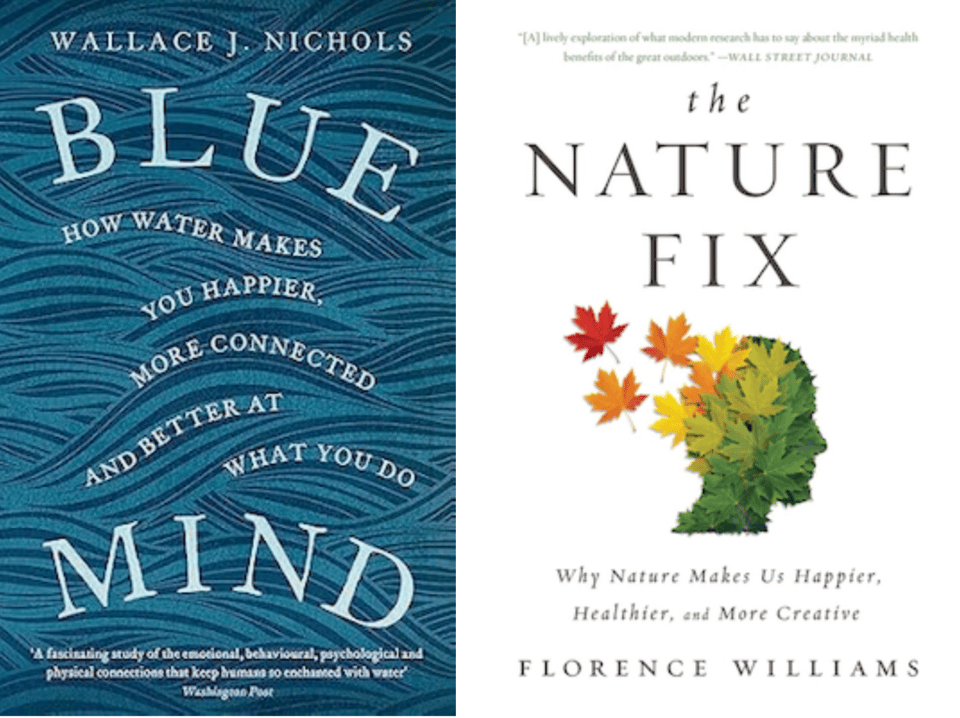
“The Nature Fix: Why Nature Makes Us Happier, Healthier, and More Creative,” by Florence Williams, is a happy confirmation of what we who love wandering in the woods already sense. Here’s a gift link to a review of this buoying book from the New York Times.
Birdnote: Bluebird Recovery Program in the Park
By Minnesota Master Naturalist Volunteer Janet Malotky
Most folks who take a stroll in the park will notice the many bird houses dotting our prairie trails. These houses reflect the Park’s participation in the Bluebird Recovery Program of Minnesota (BBRP). Currently, the BBRP has participation across the nation but it was started right here in Minnesota in the 1970s. Folks got it going in response to the significant reduction in population of Eastern Bluebirds over the past century. The BBRP’s goal is to engage organizations and individuals in establishing nesting sites for Eastern Bluebirds. Participating groups provide nest boxes along trails and then track nesting activity to a database for further study, a great example of citizen science in action. FSP has been a participant since the 1980s, with the Association supplying the trail monitoring, maintenance, and data keeping citizen scientists that keep the program running.
Like all grassland birds, Eastern Bluebirds have suffered significant population decline due to habitat destruction as grasslands have been converted to farm fields, housing developments, and shopping malls. Bluebirds have also faced increasing competition for their nesting cavities from non-native species of birds, especially House Sparrows and European Starlings. And even on farm fields, the wooden posts that could hold nesting cavities are being used less and less for fencing.The BBRP idea is that we can’t do much about the non-native species, but we can help provide more nesting cavities and ones that have entry holes too small for the competition.
When walking in the park, you may have noticed that the nest boxes are always placed in pairs. This is because Tree Swallows also like to nest in the boxes. Tree Swallows will chase away other Tree Swallows that try to nest nearby, but they aren’t bothered by Bluebirds. So placing them in pairs increases the likelihood that one nest of every pair will remain available for Bluebirds. There are other birds that like the nests as well, such as House Wrens, who tend to occupy boxes near woodland edges. There are also non-avian nesters, such as wasps and mice, which must be managed by the volunteers who monitor the boxes.
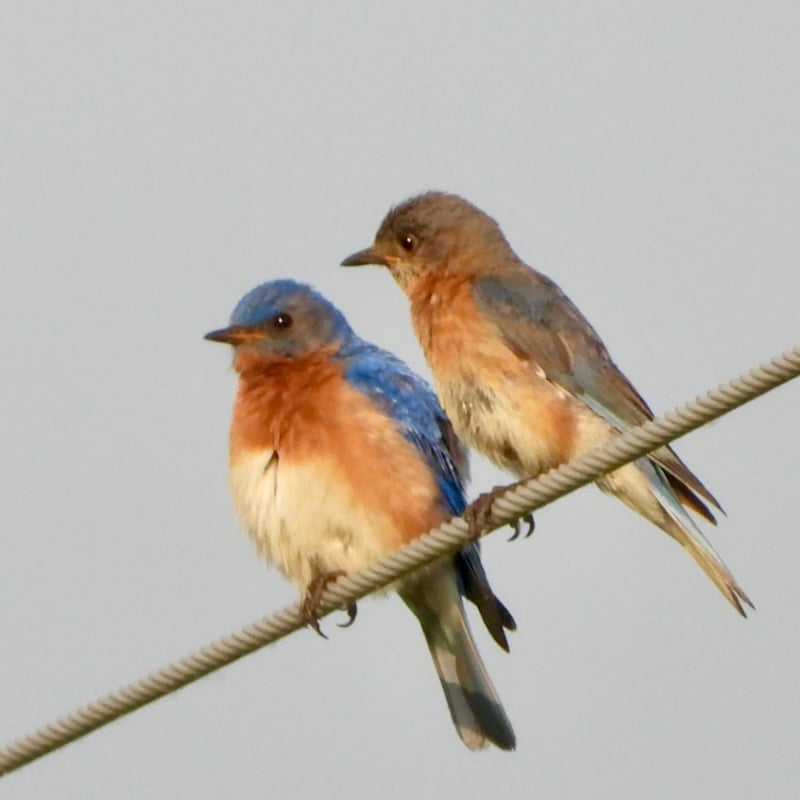
FSP currently has 168 Bluebird boxes distributed throughout the park. There are seven trails monitored by seven volunteers. Final stats for the park this year include a total of 312 Bluebirds who successfully fledged from their nest boxes. With so many Bluebirds in the park, visitors are likely to see them on the County 2 wires and low trees and shrubs near open meadows and prairies. Young Eastern Bluebirds look speckled with a bluish cast to their wings and tails. There are still plenty of adults around as well. Some of them will migrate south but some will stick around all winter. Look for their dazzling blue color in shrubs and thickets as the year wears on, a real treat once the winter palette of gray and white sets in.
Notes from the field: Support the ENRTF!
By Minnesota Master Naturalist Volunteer Steve Dietz
This Note is a personal opinion, not the official position of the Frontenac State Park Association.
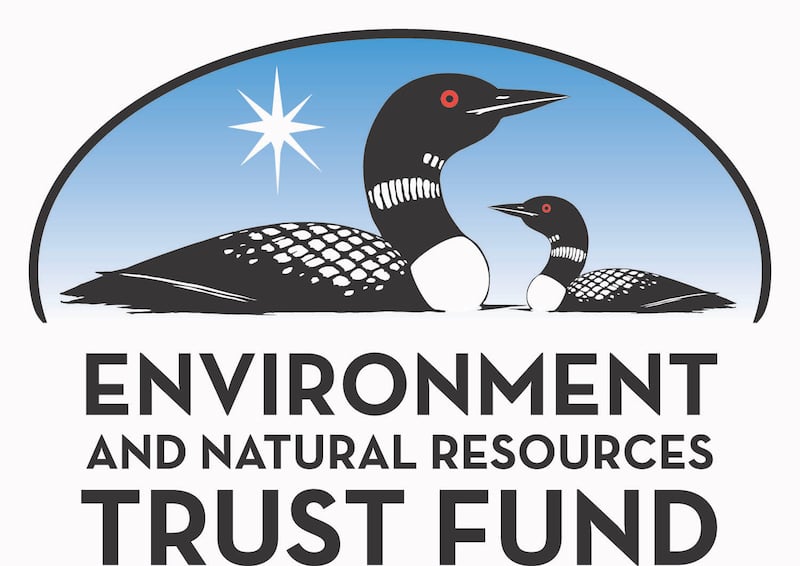
Over 30 years ago, 77% of Minnesotans voted in favor of using a portion of Minnesota State Lottery proceeds "for the public purpose of protection, conservation, preservation, and enhancement of the state's air, water, land, fish, wildlife, and other natural resources." Since then, over $1 billion - currently around $80 million per year - has been invested to help restore and protect Minnesota’s water, land, and wildlife through the ENRTF or Environment & Natural Resources Trust Fund.
These funds have supported numerous projects and research throughout the state, including, in Goodhue County, everything from the Mississippi Blufflands State Trail to improving trout stream management by understanding variable winter thermal conditions to conserving Minnesota’s nine species of freshwater turtles. It even helped support the formation of Project Get Outdoors, the program that FSPA collaborates with on our wonderful pre-K program Nature Explorers.
Reauthorization for allocating 40% of MN State Lottery funds to the environmental fund for another 25 years is on the ballot on Nov. 5.
This may be getting into the weeds a bit, but hey, we are all naturalists at heart, and there is an exciting new addition to the funds being proposed.
The ENTRF, as stated in its name, is a trust fund. Currently, there is an annual draw of 5% of the fund for grants. The proposed amendment would increase the draw to 7.5% and allocate the additional 1.5% to a new Community Grant Program. The idea is to broaden support for environmental action to smaller and community-based organizations.
The existing funding process operates on a reimbursement basis, which prevents smaller or younger organizations and entities unable to front project expenses from being reimbursed by the state. As president of the Frontenac State Park Association, I can definitely relate to this and I know many of my colleagues do as well. In addition, the complexity and length of the application process are often beyond what many important contributors to environmental and natural resources work can reasonably do. Examples of POTENTIAL Community Grant uses could include:
Local energy conservation projects, such as weatherization assistance or education.
Local emission reduction and air quality improvement projects, such as air quality monitoring or air exchangers.
Environmental education, such as traditional Indigenous natural resource knowledge initiatives.
Carbon sequestration projects, via forest easements, marginal croplands, etc.
More than 120 organizations support this amendment, in all likelihood one that you already support, and according to Ballotpedia, there is no organized opposition to the amendment.
But we cannot be complacent. 50% of Minnesotans who vote on Nov. 5 must vote affirmatively for the constitutional amendment for it to pass. And this means that if you vote, say, for a presidential candidate but leave the constitutional amendment blank, it will effectively count as a no vote. I urge you to vote yes on the “Minnesota Continue to Provide Lottery Revenue to Environment and Natural Resources Fund Amendment” on November 5.
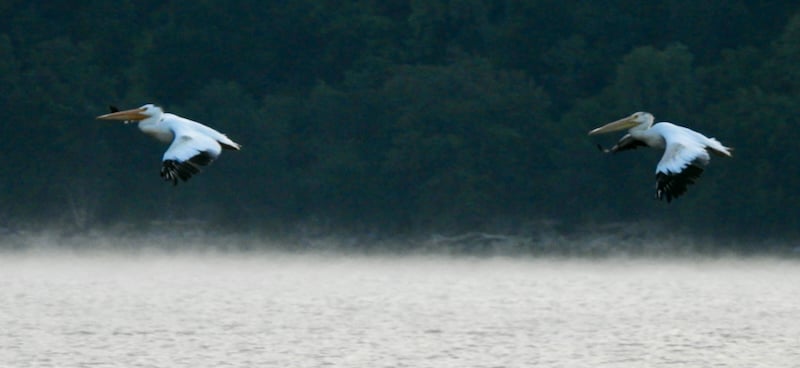
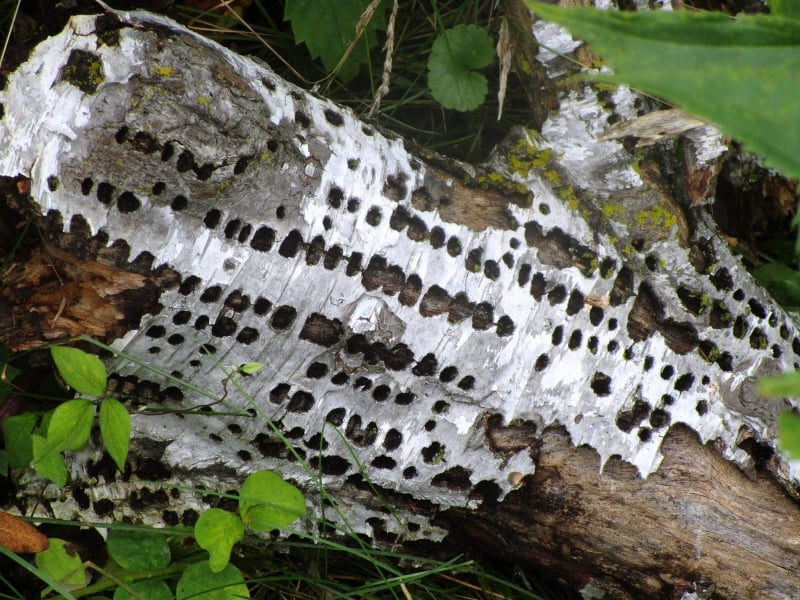
Poem of the month
"OCTOBER"
By Robert Frost (American; 1874-1963)
O hushed October morning mild,
Thy leaves have ripened to the fall;
Tomorrow’s wind, if it be wild,
Should waste them all.
The crows above the forest call;
Tomorrow they may form and go.
O hushed October morning mild,
Begin the hours of this day slow.
Make the day seem to us less brief.
Hearts not averse to being beguiled,
Beguile us in the way you know.
Release one leaf at break of day;
At noon release another leaf;
One from our trees, one far away.
Retard the sun with gentle mist;
Enchant the land with amethyst.
Slow, slow!
For the grapes’ sake, if they were all,
Whose leaves already are burnt with frost,
Whose clustered fruit must else be lost—
For the grapes’ sake along the wall.

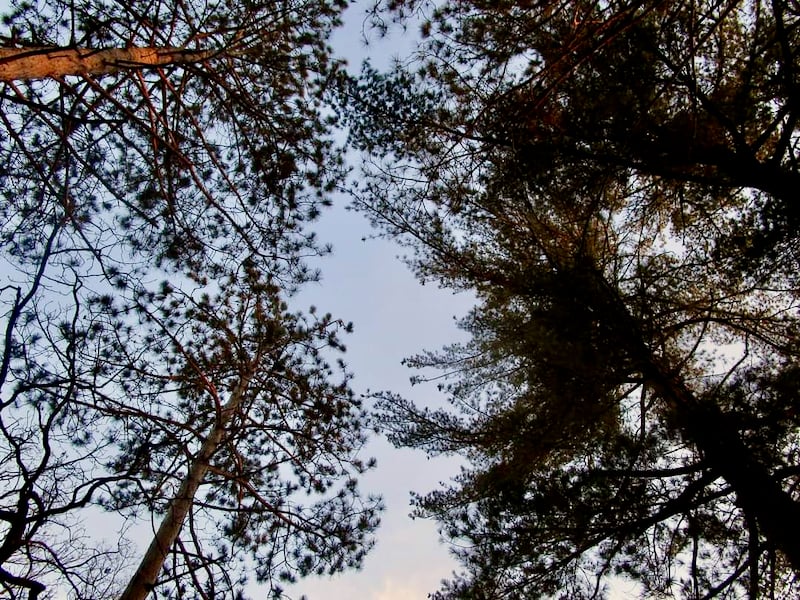
Interested in joining the FSPA?
We’d be honored to have your support. Dues are $25 per year for an individual, $35 for dual/family membership. Here’s a link with signup information.
A reminder that joining us occasionally to help with volunteer efforts is awesome too, even if you’re not a member. The FSPA’s goal is simply to share our love of Frontenac State Park with as many people as possible.
To sign up to regularly receive this free and gloriously spam-free monthly newsletter, click on “Subscribe” below. Feel free to send questions or comments to your newsletter editor at pamelamarianmiller@gmail.com. Questions about the FSPA? You can reach hard-working FSPA chair Steve Dietz at stevedietz@duck.com.
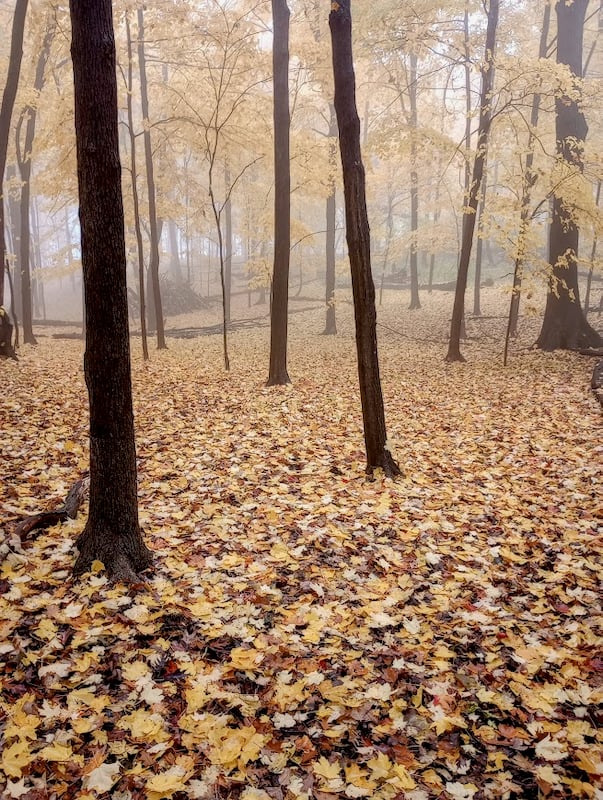
Handy links for more information and education
Frontenac State Park website
Frontenac State Park Association website
If you take pictures in the park, tag us on Instagram
Frontenac State Park bird checklist
Frontenac State Park on iNaturalist
Website for our township, Florence Township
Minnesota Master Naturalist program
Red Wing Environmental Learning Center
Lake City Environmental Learning Program on FB
Frontenac State Park staff
Jake Gaster, park manager; Amy Jay, assistant park manager; Amy Poss, lead field worker
Parting shots
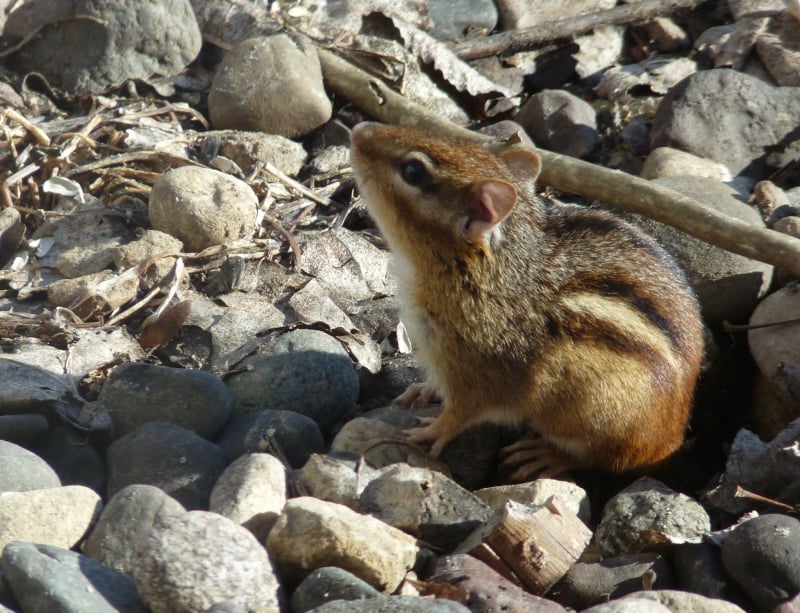
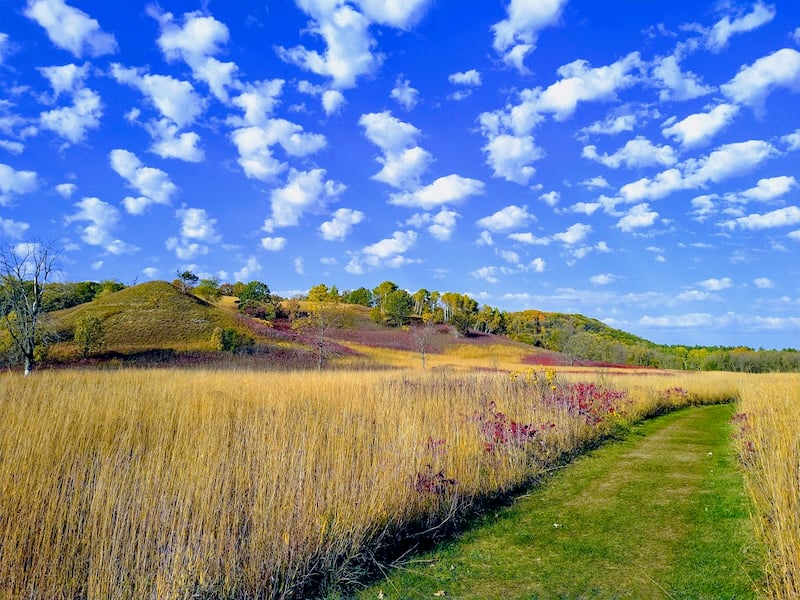
Thank you, readers and park visitors!
This is Volume 2, No. 10 of the Frontenac State Park Association newsletter, which was launched in April 2023.
Here’s where to browse the full archives of this newsletter.